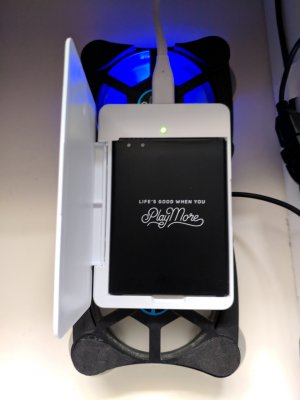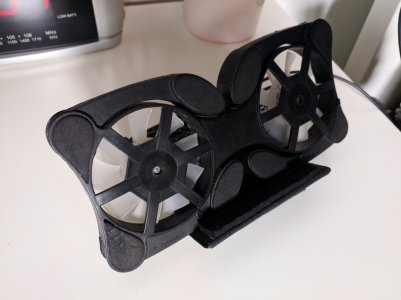The Note 7 (the device itself) didn't warn the user ahead of time before its battery went poof. My wife's Droid Razr didn't notify her before her battery decided to sort circuit internally. Have Samsung and Motorola committed fraud by not having their phones warn of an impending battery problem? By the same token, was Apple committing fraud by not letting users know when their batteries were getting weak before this OS change? Remember, the iPhone batteries in question were already worn out, and this change only affected how the phone dealt with it.
And who's to say a worn out battery is a warranty valid claim in the first place? If you are a heavy user, or have bad charging habits, your battery will wear out quickly. I would not expect a company to warranty my battery for that, as that is not a defect. That is a user created issue. Does the situation suck for Apple users? Yes. Did Apple do anything legally wrong such as fraud? My guess is no.
Actually, it IS a warranty item within the one year warranty unless excluded explicitly, and Apple does not exclude it.
The problem results from how the manufacturers program their charge controllers. There's a right way and about 50 wrong ways to charge a lithium battery. You can shave safety margins too if you're stupid, and more than a few have with bad results (e.g. Samsung's infamous exploding phones and more than a few people who have had "bulging" batteries that they caught before they shorted, sometimes because it broke the glued-on rear cover!)
The
correct way to charge a lithium chemistry battery is to allow current to run at somewhere between 0.7C and 1.0C (depending on the quality of your thermal monitoring and tolerance for risk) until the cell voltage gets to 4.2V, but do not allow cell temperature to go over 100F (if it does, halt charging until it drops back under.) This is a charge state of somewhere between 60 and 85% depending on both temperature and charge current.
Then hold voltage at 4.2V until current falls to between 0.1 and 0.3C (for a 3,000mah battery this is somewhere between 100-300ma -- split the baby and call it 200ma), again, not allowing temperature over 100F (if it does, once again, stop the charge until it falls back.) The cell is full at this point.
The problem is that the first phase will take about 45 minutes (acceptable)
but the saturation charge will require upwards of two hours if you used a reasonable rate originally (e.g. 0.5-0.7C) and three hours+ if you didn't. Nobody wants to wait that long and in fact "how fast does it charge" has become a consumer comparison point so
all the manufacturers will run the voltage up to 4.3V and a few go a bit beyond that. Beyond 4.3V is dangerous, incidentally, as it can promote offgassing in the cell (the infamous "bulging" batteries are caused by this.) This means that very small errors in the trimming of your charge controller's sense circuits lead to Samsung-style disasters. I do not believe, incidentally, that the Samsung issue had anything to do with the batteries themselves, as evidenced by the "second batch" that also caught fire. Odds are the issue was in the charge controller trimming -- it was running just a
bit too high on the transition voltage and if you do that the odds are very good you'll plate metal in the cell which will rather quickly result in a short on a fully-charged cell (and a fire.)
Second, you need
two sets of very-accurate current and voltage sense inputs to the charge system; one at the output of the charge controller and a second at the input to the regulator for the phone's circuitry, so you can subtract back out the phone's actual use (so as to obtain the net going into the battery if the phone is on.) If anyone is actually using those I've never seen that data exposed where you can get at it, so I suspect they're not -- they are instead are "guessing" using the CPU's internal monitoring and "best guess" for the other items that are on (e.g. screen brightness, GPS, etc), which is NOT accurate enough to do it right.
The problem with abusing the cells is that it dramatically shortens their cycle life. Charge 'em hot or hard and the expected 500 full cycles drops
fast; running constant-current charge to 4.3V instead of 4.2V, for example, will take a solid 100+ cycles off the expected cell life
at least and maybe as much as half the service life, especially if the device gets hot while charging on a routine basis.
But it does charge quite a bit faster.....



